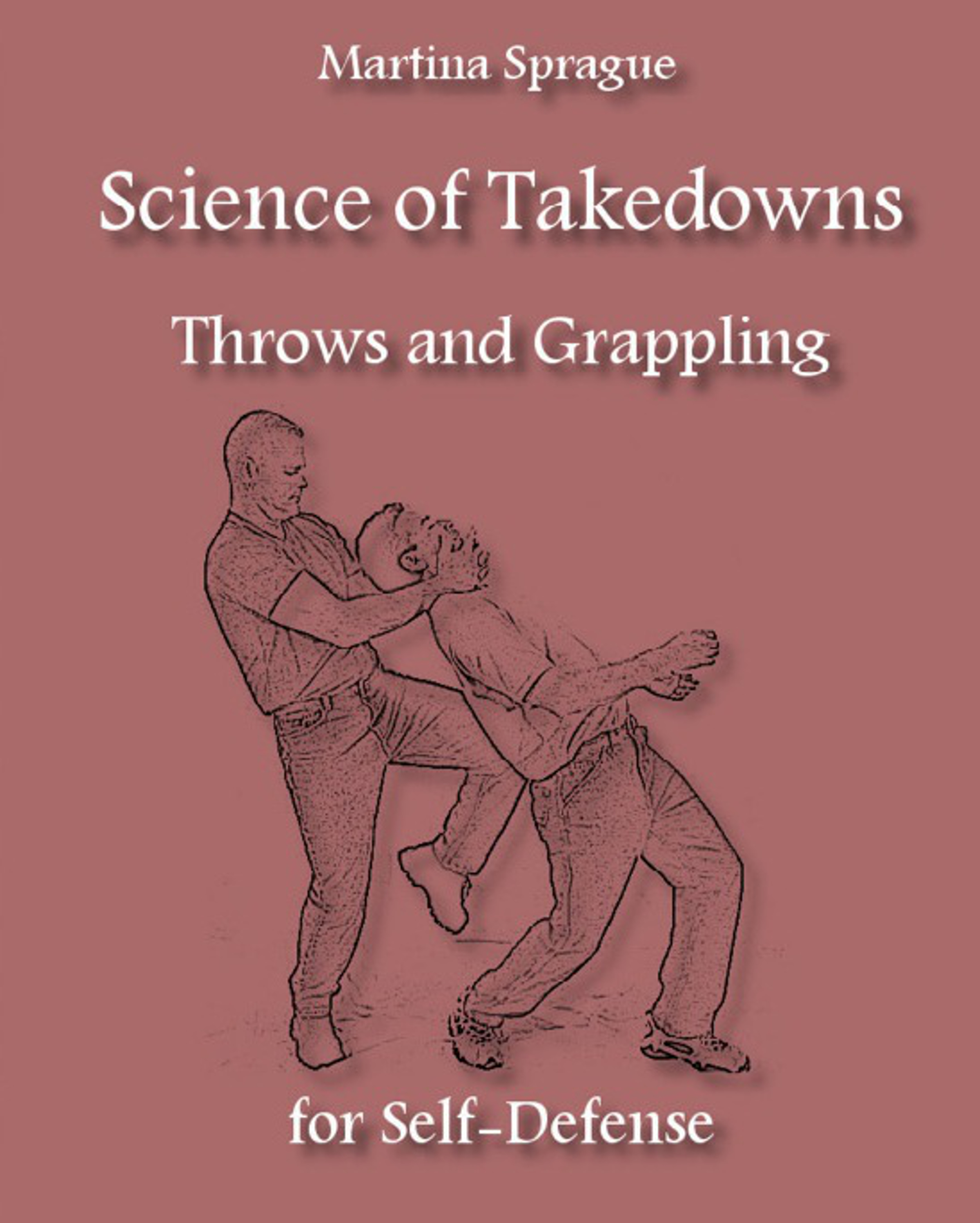 fax (000) 000-0000
fax (000) 000-0000
toll-free (000) 000-0000
Science of Takedowns, Throws, and Grappling for Self-Defense
The intent of this book is to study the principles of takedowns, throws, and grappling for the purpose of self-defense. A takedown or throw requires the ability to disturb your opponent's balance. When first getting introduced to takedowns in martial arts class, we tend to outmuscle or force our adversary down. This frequently results in the stronger or bigger person claiming victory and makes takedown practice discouraging for the lighter weight martial artist. A successful and effortless takedown, by contrast, relies on scientific principles, primarily the location of the center of gravity. This book focuses on learning to disturb an adversary's center of gravity while retaining our own; in short, how to get our opponent on the ground without going down with him. Since the principle used for shifting the center of gravity is identical regardless of a person's physical build, understanding this principle allows a smaller person to take a larger adversary down with relative ease. The book's primary aim of discussing principles rather than specific techniques makes it adaptable to almost any situation that warrants a takedown.
Takedowns and throws accomplish the same thing: to get our opponent on the ground. Although a throw is often more dynamic than a takedown, it is also more difficult for a lighter person to execute a throw successfully against a bigger adversary. Throws also don't work well if you lack a solid foundation. The same is not necessarily true for takedowns. If your opponent lifts you off your feet, you can still use the principle of balance manipulation to take him down. To make the text easily applicable to self-defense, we will focus on takedowns first. Once you master the takedown, it is relatively easy to adapt your positioning slightly and use the same principles to execute a throw. Many of the principles discussed in this book can also be used as "rescue techniques" when coming to the aid of another person. When you have learned how to unbalance an adversary, a variety of effective and easy to use presses are discussed, giving you the option to subdue an opponent on the ground until help arrives.
In order to use the information under stressful conditions with minimal amount of training, gross motor skills will take precedence over fine motor skills. In order to gain skill and confidence, however, you must practice the concepts discussed herein, and a number of exercises are provided for this purpose. An important principle is developing the right mindset about a high threat encounter. We can easily talk about how one should think, or how one should react, or what one should do, but only realistic practice brings proper insight. Takedowns, throws, and grappling require close physical contact with our opponent, which may feel uncomfortable to those without sufficient training in the martial arts. You may therefore want to practice physical closeness with a person you trust at first, but not necessarily know well.
Our intent is not to learn every useful technique we can think of for self-defense. Although strikes and kicks are valuable tools that we will touch on, they are not the focus of this book. If your size and weight are considerably less than your opponent's, generating the momentum needed to execute a strike powerful enough to end a confrontation against a person intent on hurting you is difficult, even if you are a very good striker or kicker. Most people can take a few good blows without it stopping them. Those who do stop when struck generally have a psychological disadvantage; they have never been hit before and believe they are hurt worse than they are. But these kinds of people are not likely to initiate an attack against you in the first place. A strike or kick that lands precisely on an inherently weak area of your opponent's anatomy may well do enough damage to end the fight. But the time and adrenaline constraints of a real confrontation make it difficult to execute or rely on such a blow. If your first strike fails to prove effective, and the distance between you and your opponent is such that he can grab you, further strikes may be even more difficult to execute. Takedowns and throws, by contrast, lend themselves to short fighting range.
We will emphasize correct principle coupled with correct mindset (or correct thinking). Although the possible attacks are many and only limited by the attacker's imagination and skill, the principles are few and can be counted on the fingers of one hand. Why train in principles rather than in techniques? A specific technique works only for a specific situation. Training in and building an arsenal of techniques assumes that you know beforehand what type of attack is coming; it assumes that you have memorized and perfected enough techniques to prepare you for every type of attack with every slight variation. But unless you have practiced these techniques to the point of muscle memory, you will not likely be able to use them successfully in a chaotic situation. Focusing on principles has a great advantage in that it eliminates the need to remember a hundred specific defenses for a hundred specific attacks.
